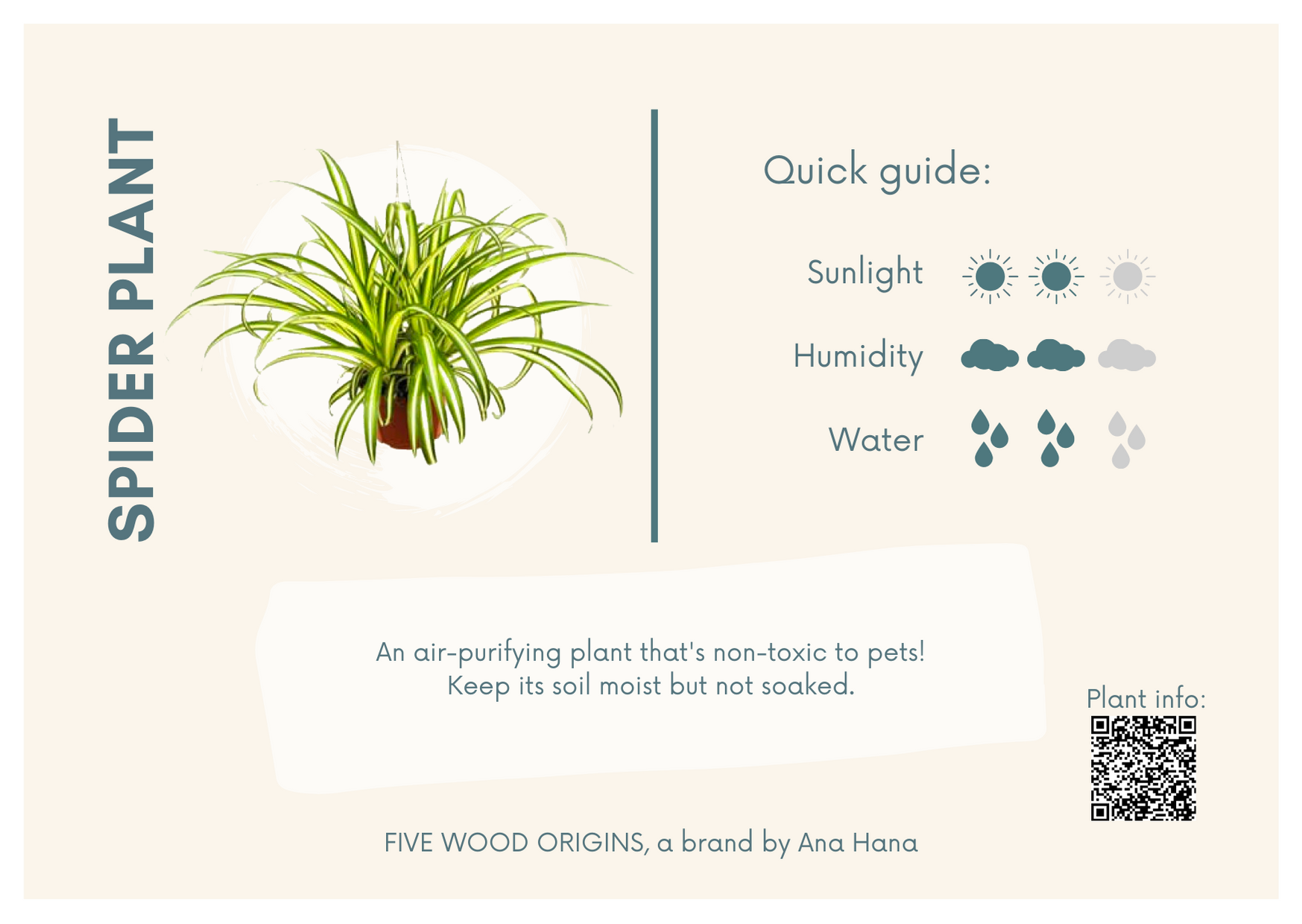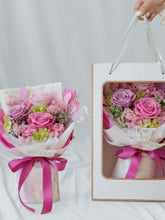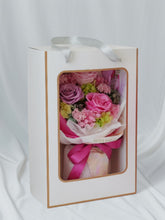Caring for your Spider Plant (Chlorophytum Comosum)

The Spider Plant (Chlorophytum Comosum) is native to South Africa and goes by many other names: the Airplane Plant, St. Bernard's Lily, Spider Ivy, and Ribbon Plant. Its leaves come in several variations, but most common are the variegated ones. Those with a single off-white stripe down the center of its leaves are Chlorophytum Comosum Vittatum, whilst those with off-white stripes down the edges of each leaf are Chlorophytum Comosum Variegatum. There are also varieties with solid green leaves, though less common.
Spider Plants make great houseplants for multiple reasons - apart from its clean and look, it is also a natural air-purifier that can help to reduce indoor pollutants, and is non-toxic to pets and humans. Got an exceptionally plant-curious dog? No problem.

Sunlight
Spider Plants love bright to moderate indirect sunlight. If put in direct sunlight, their leaves might scorch and burn, causing their tips to turn brown and leaves to turn spotty. The best place to house them would be by a large window in your living room.
Watering
Spider Plants love moist soil. Water thoroughly once a week, ensuring that soil remains moist but well-drained. This is especially so when your Spider Plant is still growing. However, once mature (after a year), start to water your Spider Plant less frequently.
Be careful not to over-water or drown your Spider Plant, if not root rot will start to fester and your plant will be hard to salvage.
Repotting
Spider Plants are relatively quick-growing and become pot-bound easily. Although they grow best when they're slightly pot-bound, they can grow out of hand and eventually crack the pot they're in. You can repot your Spider Plant yearly, or every other year if it's mature or its growth has started to plateau.
To start, remove your Spider Plant from its current pot in its entirety - you can poke chopsticks through the existing pot's drainage holes or gently hit your pot against a table so that the entire root system slides out. Carefully massage the root ball to loosen up the soil, then wash and trim its roots. After that, you can repot into fresh soil. Care for your Spider Plant as per usual.
Propagating
If your Spider Plant is healthy, it will eventually produce pups, which are little shoots from the original plant. Once the pups reach about two inches in diameter, you can remove them from the main plant by using a clean razor, or you can also leave them alone and wait for the pups to take root.
Either way, pot the pups into new soil after you've detached them from the main plant.
Fertilising
You can fertilise your Spider Plant once or twice a month with a regular water-based fertiliser. This will work better than solid slow-releasing fertilisers. As fertilising will encourage growth, try not to fertilise your Spider Plant when it is outgrowing its pot.
Temperature and Humidity
Spider Plants thrive in room temperature (somewhere around 24°C), or slightly below. This makes them great plants for the office and bedroom. They also enjoy average humidity. If its environment is too dry, you'll be able to tell by looking at its leaf tips - if they're turning brown, try to mist your Spider Plant occasionally.
Troubleshooting
Wilting in full shade, or full sunlight: Insufficient light and too much light, respectively. Move your Spider Plant somewhere else with more moderate light exposure.
Leaves yellowing despite plenty of water: Root rot. Usually the lower leaves start to turn yellow first. Roots will start to turn black and the entire plant will eventually die. If mildly affected, swiftly remove all wilting parts and treat with an organic fungicide. If severely affected, get rid of the entire plant. Do not reuse the same soil, or possibly the same pot before treating it. Disinfect all tools and containers that came into contact with infected plants.
Droopy leaves: Poor soil quality, or insufficient fertiliser. Incorporate fertilisers more regularly into its care routine.
Get a Spider Plant here.
P.s. If you want a fuller pot of Spider Plants, you can plant some pups in the same pot as the main plant! Make sure to check their root growth.
 Singapore
Singapore
 Japan
Japan
 Australia
Australia
 Malaysia
Malaysia
 Indonesia
Indonesia
 EU
EU









